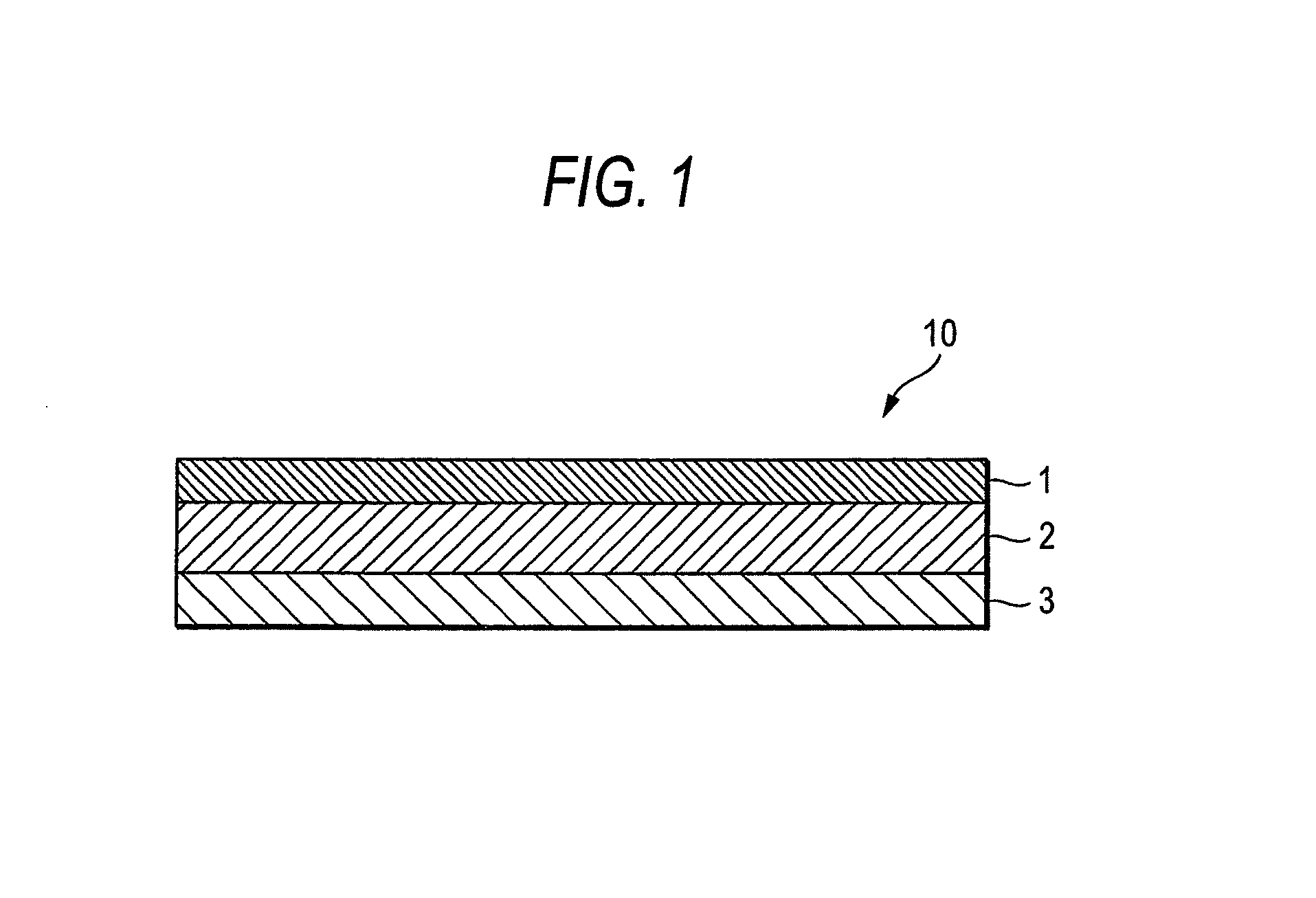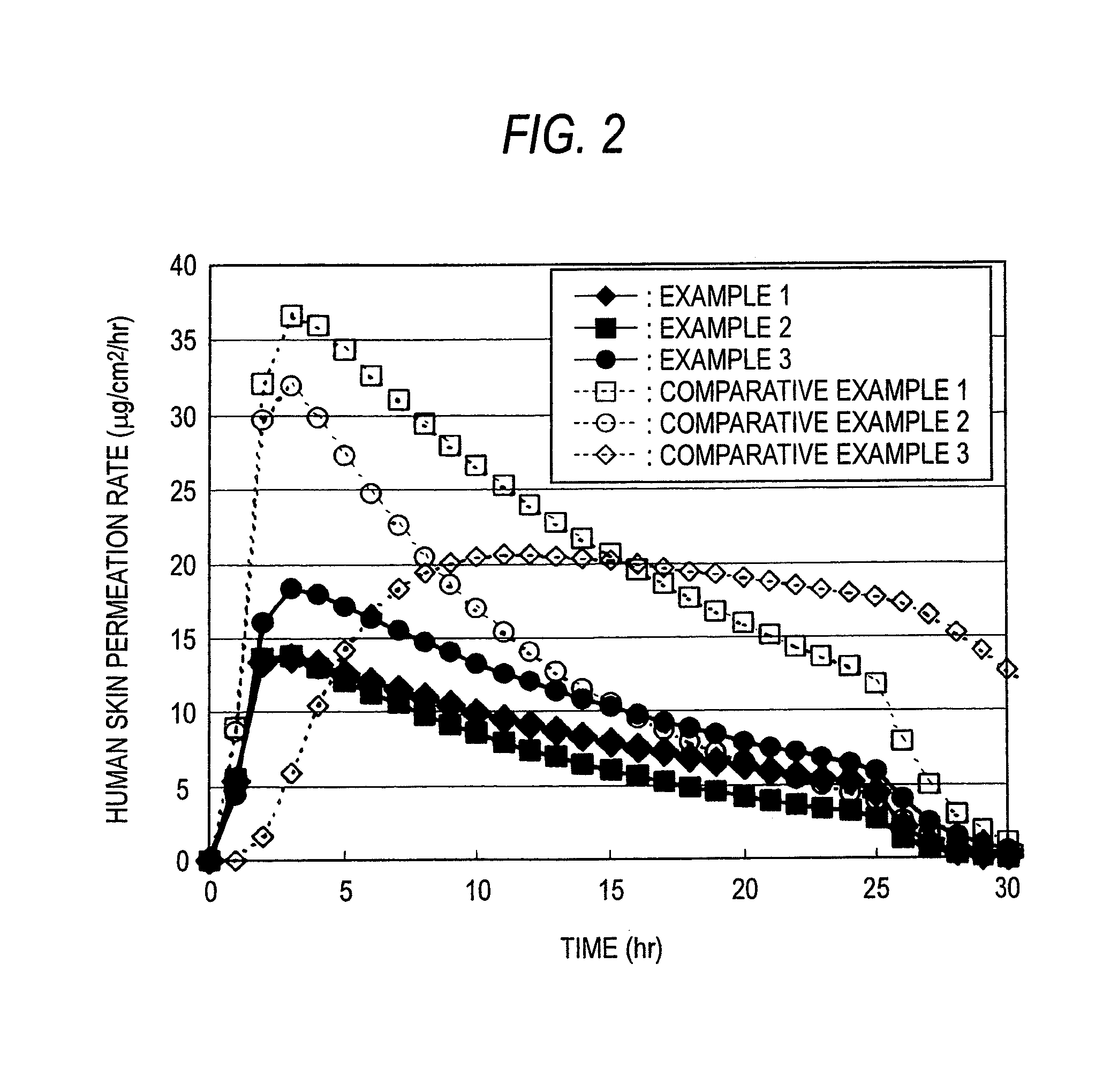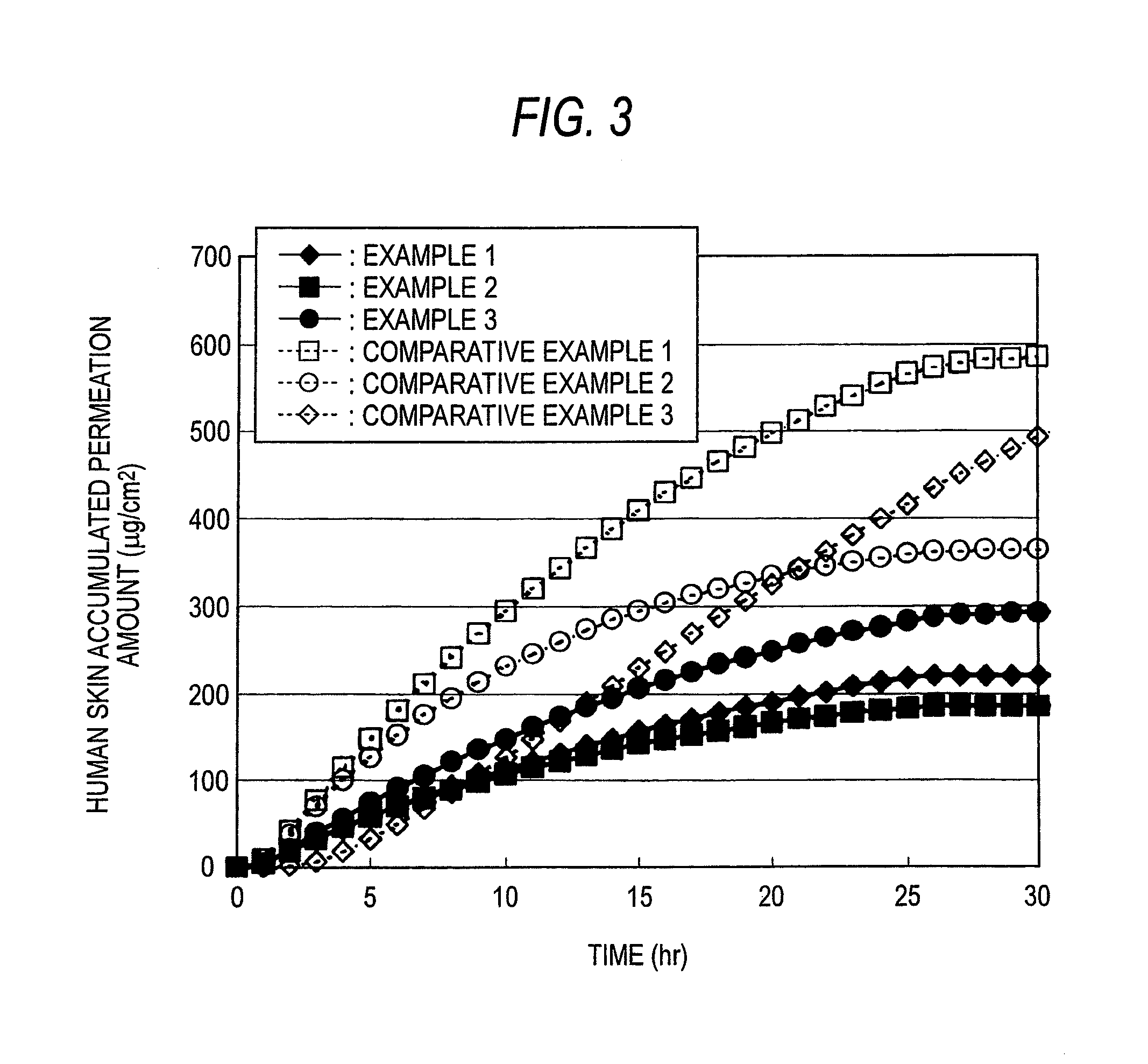Percutaneous administration device of bisoprolol
a technology of percutaneous administration and bisoprolol, which is applied in the direction of biocide, drug composition, cardiovascular disorder, etc., can solve the problems of difficult choice from the viewpoint of practical use, insufficient retention of the effects of bisoprolol, and easy side effects, so as to achieve the reduction of the release rate of bisoprolol, improve the coagulation properties of the pressure-sensitive adhesive layer, and reduce the effect of physical skin irritation at the time of peel
- Summary
- Abstract
- Description
- Claims
- Application Information
AI Technical Summary
Benefits of technology
Problems solved by technology
Method used
Image
Examples
examples
[0104]The invention is hereunder specifically described with reference to the following Examples, but it should not be construed that the invention is limited to these Examples. Abbreviations used in the following Examples are as follows.
[0105]BSP: Bisoprolol
[0106]PIB1: Polyisobutylene having a viscosity average molecular weight of 4,000,000
[0107]PIB2: Polyisobutylene having a viscosity average molecular weight of 55,000
[0108]TF1: Tackifier, hydrogenated terpene based resin, softening point: 150° C.
[0109]TF2: Tackifier, alicyclic saturated hydrocarbon resin, softening point: 125° C.
[0110]IPM: Isopropyl myristate
[0111]ODO: 2-Octyldodecanol
examples 1 to 2
[0112]A viscous toluene solution of a pressure-sensitive adhesive composition was prepared according to a blending proportion shown in Table 1; the obtained solution was coated in a thickness after drying of 80 μm on a liner made of polyethylene terephthalate (PET) (thickness: 75 μm) which had been subjected to a silicone peel-off treatment; and this was then dried at 100° C. for 5 minutes in a hot air circulation type dryer, thereby forming a pressure-sensitive adhesive layer. This pressure-sensitive adhesive layer was stuck on a PET film having a thickness of 12 μm or a laminated film of a PET film having a thickness of 2 μm and a PET non-woven fabric of 12 g / m2 on the non-woven fabric side, thereby obtaining a laminate in a sheet form. The PET-made liner of this laminate was peeled off, and several layers of a pressure-sensitive adhesive layer having the same composition and thickness as those described above were laminated on the exposed pressure-sensitive adhesive surface, ther...
PUM
| Property | Measurement | Unit |
|---|---|---|
| thickness | aaaaa | aaaaa |
| weight ratio | aaaaa | aaaaa |
| weight ratio | aaaaa | aaaaa |
Abstract
Description
Claims
Application Information
 Login to View More
Login to View More - R&D
- Intellectual Property
- Life Sciences
- Materials
- Tech Scout
- Unparalleled Data Quality
- Higher Quality Content
- 60% Fewer Hallucinations
Browse by: Latest US Patents, China's latest patents, Technical Efficacy Thesaurus, Application Domain, Technology Topic, Popular Technical Reports.
© 2025 PatSnap. All rights reserved.Legal|Privacy policy|Modern Slavery Act Transparency Statement|Sitemap|About US| Contact US: help@patsnap.com



